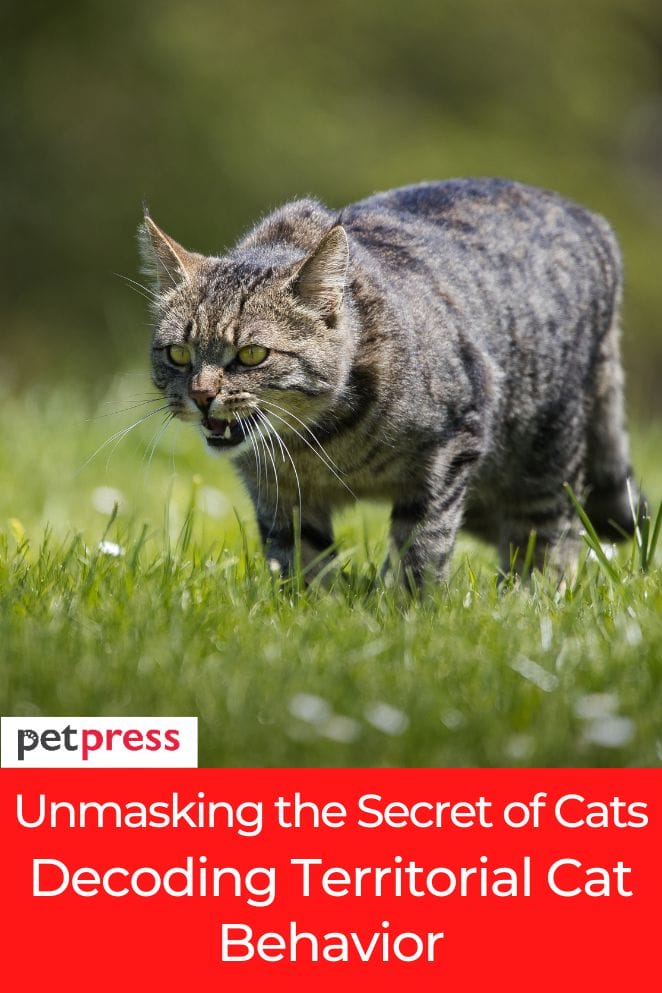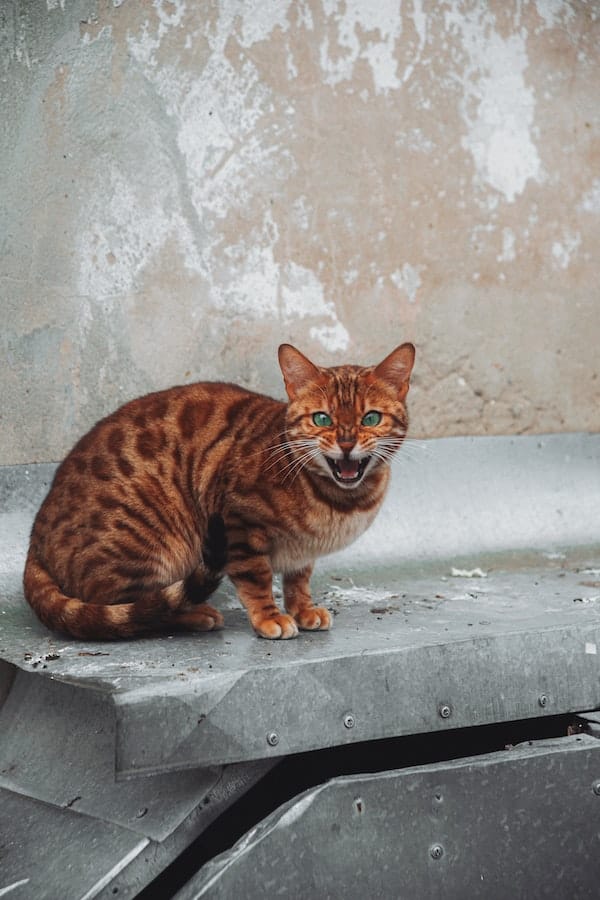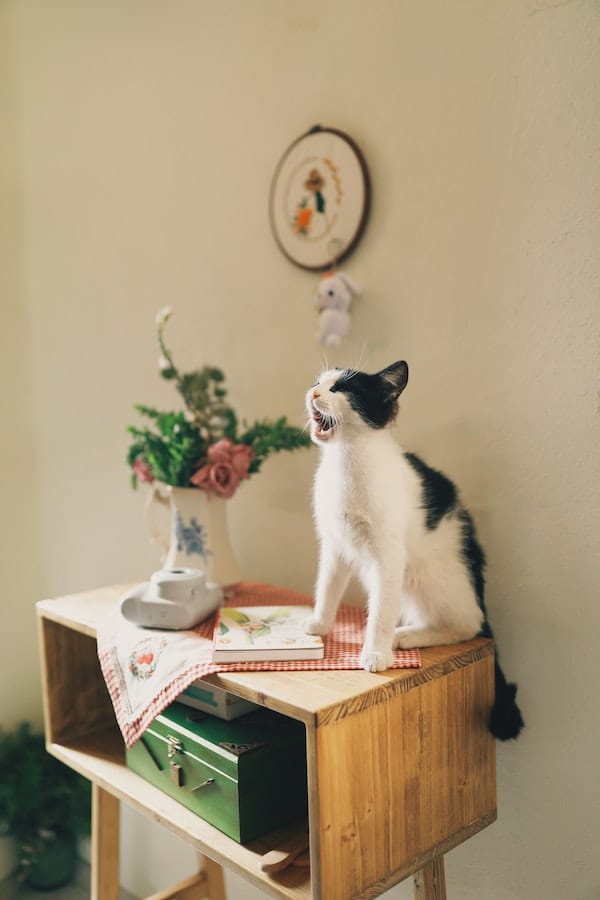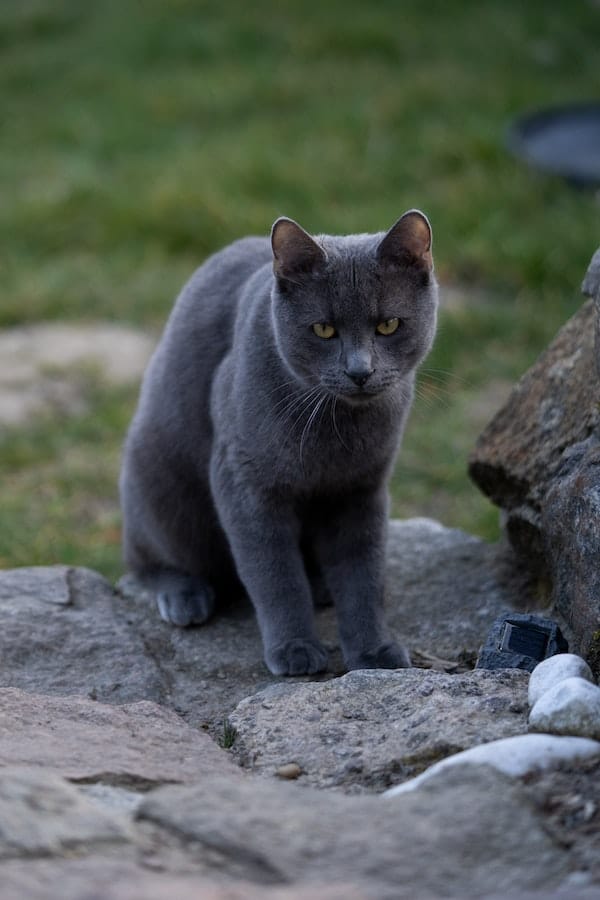
Hello, fellow cat lover! I’d be delighted to delve into the captivating realm of territorial cat behavior with you.
If you’ve ever found yourself pondering why your feline friend acts as if they reign over the household, you’ve come to the right spot.
Cats, those adorable and seemingly cuddly companions, have a remarkable and sometimes mysterious territorial instinct that can make them seem like the kings and queens of their domain.
You see, behind that soft, fluffy coat and those endearing whiskers, there’s a fascinating layer of primal behavior that often takes the lead in your cat’s actions.
Let’s take a closer look at the intriguing world of territorial tendencies in our beloved feline friends.
What Is Territorial Behavior in Cats?
Territorial behavior in cats is a fascinating aspect of their nature.
It revolves around the idea of cats defining and defending their personal space.
To put it simply, it’s as if they have their own little kingdom, and they’re incredibly choosy about who they allow to cross the drawbridge into their domain.
This behavior can be traced back to their innate hunting instincts, which play a significant role in how they perceive and protect their territory.

Types of Cat Territories
Let’s continue our exploration into the captivating world of cat territories by taking a closer look at the different types of territories your feline friend might stake a claim to.
Just like any sovereign ruler, cats have a nuanced understanding of their kingdom.
Core territory
This is the inner sanctum, the heart of your cat’s kingdom.
Within the core territory, your cat feels the utmost security.
It typically includes essential elements such as their food and water dishes, as well as the all-important litter box.
This is the space where they spend the majority of their time and where they’re most comfortable.
Home range territory
Think of the home range territory as the larger expanse surrounding the core territory.
It’s the hunting grounds, the exploration zone, and essentially the extended kingdom where your cat roams freely.
This territory covers the areas where they might lounge, play, and survey their domain.
Territorial pathways
Cats are known for their resourceful nature, and they often create what can be aptly described as “highways” within their territory.
These are like secret tunnels through their kingdom.
These pathways allow them to navigate their space more easily, almost like having their own network of shortcuts.
You might observe your cat following specific routes as they move around your home.
Temporary territories
Sometimes, cats establish temporary territories.
These are like little vacation spots within their larger domain.
When they venture outside or explore new areas, they might briefly designate a particular spot as their own.
It could be a sunny windowsill they’ve claimed for a while or a cozy corner where they’ve found some fascinating object to investigate.

Common Signs of Territorial Cat Behavior
So, how do you know if your cat is claiming territory? Look out for these telltale signs:
Spraying
One of the most unmistakable signs of territorial behavior is when your beloved feline starts spraying urine.
While this behavior might be a bit vexing for us humans, it’s a potent way for them to mark their turf.
Cats have scent glands in various parts of their bodies, and when they release that distinct scent through urine spraying, they’re essentially saying, “This is mine!”
Scratching
Cats are meticulous about their claws, and scratching is a multi-purpose activity for them.
Not only does it help maintain their claws, but it’s also a means of marking their territory.
When your cat scratches furniture, walls, or other objects, it’s like they’re leaving their calling card with scent glands in their paws.
It’s another way of saying, “This belongs to me.”
Aggression
Territorial behavior can sometimes lead to overprotectiveness, particularly over certain areas or possessions.
When cats become excessively possessive, it can manifest as aggression.
This might involve hissing, growling, or even physical confrontations with other animals or even humans.
It’s their way of asserting dominance and defending their kingdom.
Hiding and pouncing
Cats are natural hunters, and their territorial instincts often lead to behaviors like hiding and pouncing.
They’ll strategically position themselves in hidden spots within their territory, patiently waiting to pounce on unsuspecting “intruders.”
This behavior is a combination of their hunting prowess and their instinct to protect their turf.

Factors Contributing to Territorial Behavior
Territorial behavior isn’t one-size-fits-all; it’s influenced by several factors:
Ancient instincts
Cats, in all their domesticated glory, are descendants of mighty hunters.
Their ancestors roamed the wild and lived by hunting for food.
This history is embedded deep within their genes. In the wild, territory was a matter of survival.
A larger territory meant more access to food, shelter, and mates.
Age
Age plays a significant role in determining the extent of territorial behavior in cats.
Younger cats are often still learning the ropes when it comes to territory.
They might be more exploratory and less territorial, as they are in the process of understanding their environment.
On the other hand, older cats tend to be more territorial.
They’ve had time to establish their domain, and their behaviors are more rooted in this understanding of their space.
Sex
Sex is another key factor in territorial behavior.
Male cats, or toms, are generally more territorial than their female counterparts.
This heightened territoriality in males is largely driven by their natural instinct to defend their territory and compete for mates.
Female cats, or queens, can also display territorial behavior, especially when they’re in heat, but it’s typically less pronounced than in males.
Previous experiences
A cat’s previous experiences and history can significantly influence their territorial behavior.
Cats might become territorial due to past encounters or traumas.
If they’ve had negative experiences with other animals or humans, they may become more defensive and protective of their territory.
Conversely, positive experiences can lead to a more confident and secure cat.
Breed
Interestingly, breed can also play a role in determining the extent of territorial behavior.
Some breeds are inherently more prone to being territorial than others.
For instance, Siamese and Burmese cats are generally known for being less territorial and more sociable, while breeds like the Maine Coon and Scottish Fold can be more territorial and independent.
It’s important to note that individual personality and upbringing can also override breed tendencies.
Managing Territorial Cat Behavior

You’ve asked a crucial question – how can we ensure harmony in our feline kingdom?
Managing territorial behavior in cats is a balance of understanding their needs and employing practical strategies to keep the peace.
Here are some key methods to consider:
Neutering/spaying
Neutering (for males) and spaying (for females) can be effective strategies to mitigate territorial behavior, especially in male cats.
These procedures can reduce the urge to mark their territory and engage in territorial disputes with other cats.
Enrichment
Keeping your cat’s mind and body active is vital to alleviate territorial behavior.
Provide a variety of toys, puzzles, and interactive play opportunities.
Cats, as natural hunters, thrive on activities that mimic their instinct to stalk, chase, and pounce.
Designated territory
To help your cat feel secure, consider setting aside a designated area within your home.
This space should include all their essentials – food, water, a litter box, and comfortable resting spots.
It’s like giving them their own little kingdom where they can reign supreme.
Positive reinforcement
Positive reinforcement can work wonders.
When your cat exhibits good behavior, reward them with treats and affection.
This reinforces the idea that peaceful and non-aggressive actions are associated with rewards.
Positive reinforcement can be a powerful tool in promoting desirable behavior.
Consult a veterinarian
If territorial behavior becomes problematic or escalates to the point of aggression or distress for your cat, it’s essential to consult a veterinarian.
They can provide guidance, conduct a thorough evaluation, and recommend behavioral interventions or medical solutions, if necessary.
Conclusion
In the captivating realm of cats, territorial behavior adds an intriguing layer to their already charming personalities.
When you grasp the signs and factors driving this behavior, it paves the way for a peaceful domain for your feline friend.
It’s crucial to remember that they’re not just our pets; they’re truly majestic rulers in their own right, reigning over their tiny kingdoms with grace and flair.
FAQs
Cats often choose areas that they find comfortable or central in the home to mark as their territory. Your couch may be a prized spot.
Yes, with patience, training, and the right techniques, you can modify your cat’s territorial behavior to a more manageable level.
Absolutely! Indoor cats create territories within the home, and it’s essential to provide them with the right environment to satisfy their natural instincts.
Slow and steady wins the race. Gradual introductions, separate spaces, and supervised interactions can help prevent conflicts.
Cats often pick cozy spots that make them feel secure and are part of their territory, like a favorite throne in their kingdom.


GIPHY App Key not set. Please check settings